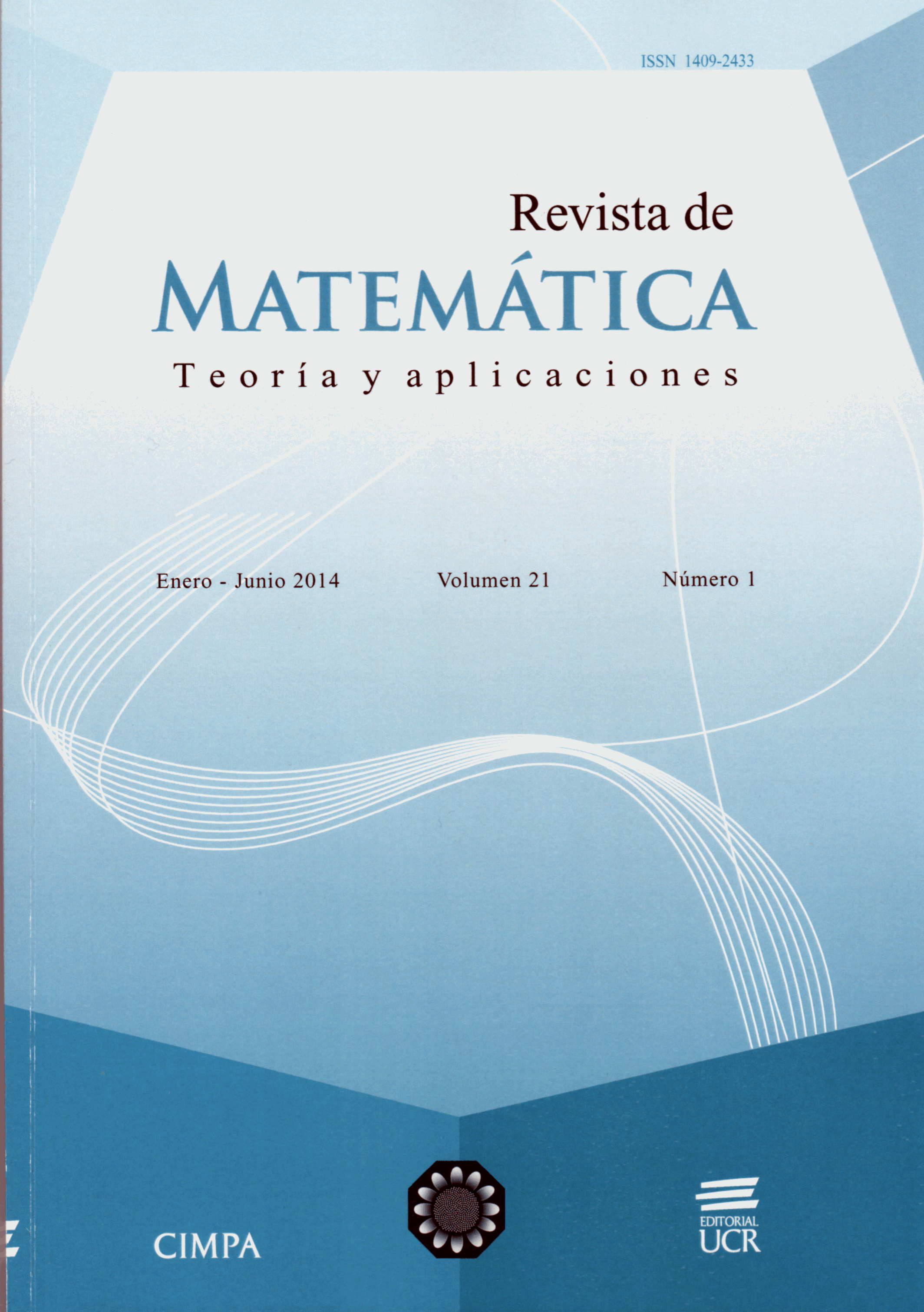Abstract
The STATIS method, proposed by L’Hermier des Plantes and Escoufier, is used to analyze multiple data tables in which is very common that each of the tables have information concerning the same set of individuals. The differences and similitudes between said tables are analyzed by means of a structure called the compromise. In this paper we present a new algorithm for applying the STATIS method when the input consists of interval data. This proposal is based on Moore’s interval arithmetic and the Centers Method for Principal Component Analysis with interval data, proposed by Cazes el al. [5]. In addition to presenting the INTERSTATIS method in an algorithmic way, an execution example is shown, alongside the interpretation of its results.
References
Abdi, H.; Valentin, D. (2007) “The STATIS Method”, Neil Salkind (Ed.) Encyclopedia of Measurement and Statistics. Sage, Thousand Oaks CA: 955–962.
Billard, L.; Diday, E. (2006) Symbolic Data Analysis: Conceptual Statistics and Data Mining. John Wiley & Sons Ltd., United Kingdom.
Billard, L.; Douzal-Chouakria, A.; Diday, E. (2011) “Symbolic principal components for interval-valued observations”, Statistical Analysis and Data Mining 4(2), 229–246.
Caprani, O.; Madsen, K.; Nielsen, H. (2002) “Introduction to Interval Analysis”, Informatics and Mathematical Modelling, Technical University of Denmark, DTU, pp. 82.
Cazes, P.; Chouakria, A.; Diday, E.; Schektman, Y. (1997) “Extension de l’analyse en composantes principales à des données de type intervalle”, Rev. Statistique Appliquée 45(3): 5–24.
Diday E. (1987) “Introduction à l’approche symbolique en Analyse des Données”. Premières Journées Symbolique-Numérique. Université Paris IX Dauphine. Paris, France.
Escoufier, Y. (1980) “L’analyse conjointe de plusieurs matrices de données”, in: M. Jolivet (Ed.) Biométrie et Temps, Société Française de Biométrie, Paris: 59–76.
González, J.; Rodríguez, O. (1995) “Algoritmo e implementación del método STATIS”, in: J. Trejos (Ed.) IX Simposio Métodos Matemáticos Aplicados a las Ciencias, UCR-ITCR, Turrialba.
Lauro, C.; Palumbo F. (2001) “Principal component analysis of interval data: a symbolic data analysis approach”, Computational Statistics & Data Analysis 15(1): 73–87.
Lavit, Ch.; Escoufier, Y.; Sabatier, R.; Traissac, P. (1994) “The ACT (STATIS) method”, Computational Statistics & Data Analysis 18: 97–119.
Lavit, Ch., (1988) Analyse Conjointe de Tableaux Quantitatifs. Ed. Masson, París.
L’Hermier des Plantes, H. (1976) Structuration des Tableaux à Trois Indices de la Statistique. Thèse de Troisième Cycle. Universitè de Montpellier, Montpellier, France.
Makosso-Kallyth S.; Diday E. (2012) “Adaptation of interval PCA to symbolic histogram variables”, Advances in Data Analysis and Classification July 6(2): 147–159.
Moore, R.E. (1979) Methods and Applications of Interval Analysis. Society for Industrial and Applied Mathematics (SIAM), Philadelphia PA.
Rodríguez, O.; Diday, E.; Winsberg, S. (2001) “Generalization of the principal component analysis to histogram data”, in: Workshop on Symbolic Data Analysis of the 4th European Conference on Principles and Practice of Knowledge Discovery in Data Bases, September 12-16, 2000, Lyon, France.
Rodríguez, O. (2000) Classification et Modèles Linéaires en Analyse des Données Symboliques. Thèse de Doctorat, Université Paris IX Dauphine, Paris, France.
Stolfi, J.; de Figueiredo, L. (2003) “An introduction to affine arithmetic”, TEMA Tend. Mat. Apl. Comput. 4(3): 297–312.
Stolfi, J.; de Figueiredo, L. (1997) “Self-validated numerical methods and applications”, in: Brazilian Mathematics Colloquium Monograph, IMPA, Rio de Janeiro, Brazil.
Verde, R.; De Carvalho, F.A.T.; LeChevallier, Y. (2000) “A dynamical clustering algorithm for multi-nominal data”, in : H.A.L. Kiers, J.-P. Rasson, P.J.F. Groenen & M. Schader (Eds.) Data Analysis, Classification, and Related Methods, Springer-Verlag, Heidelberg: 387–394.





